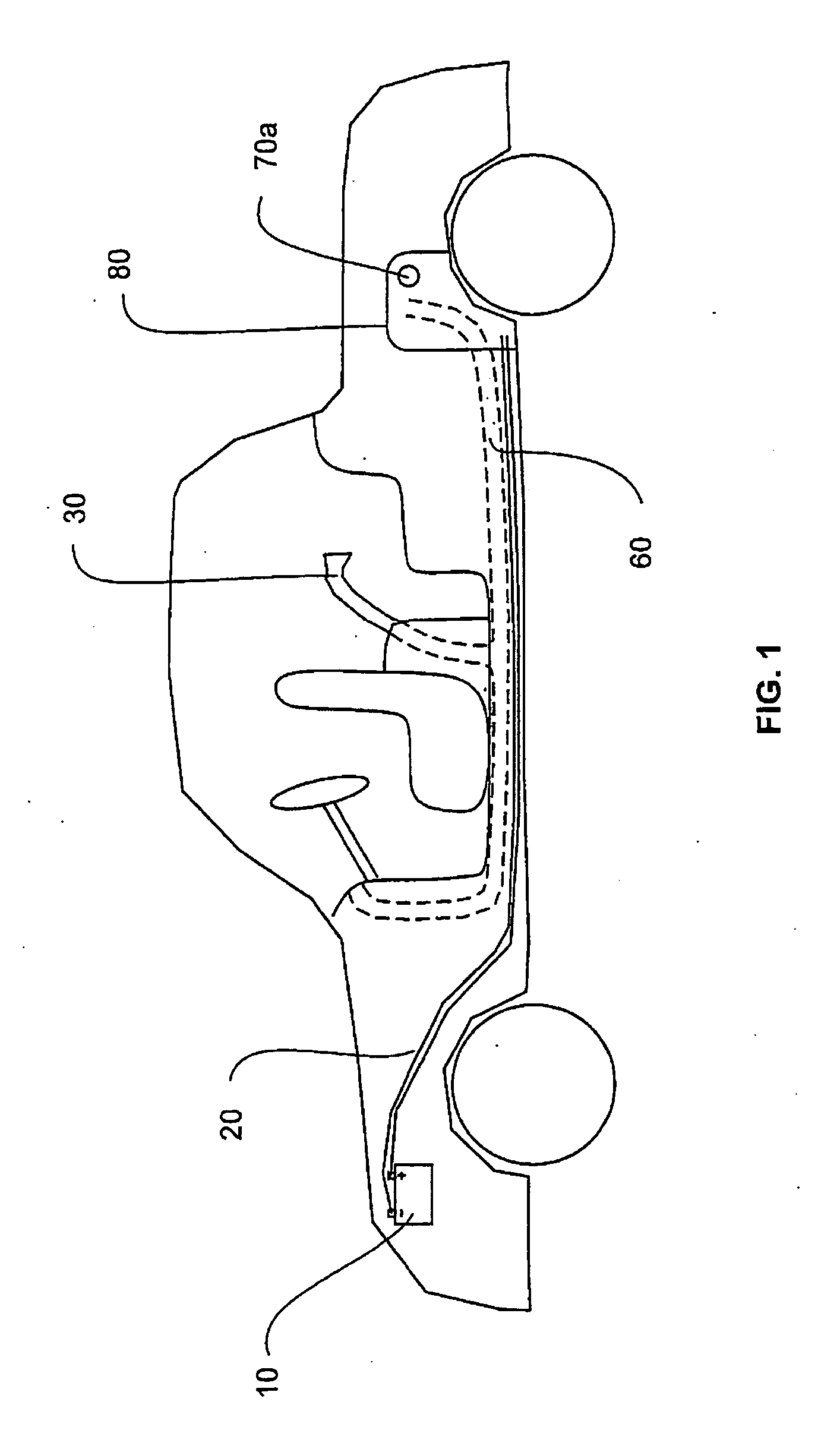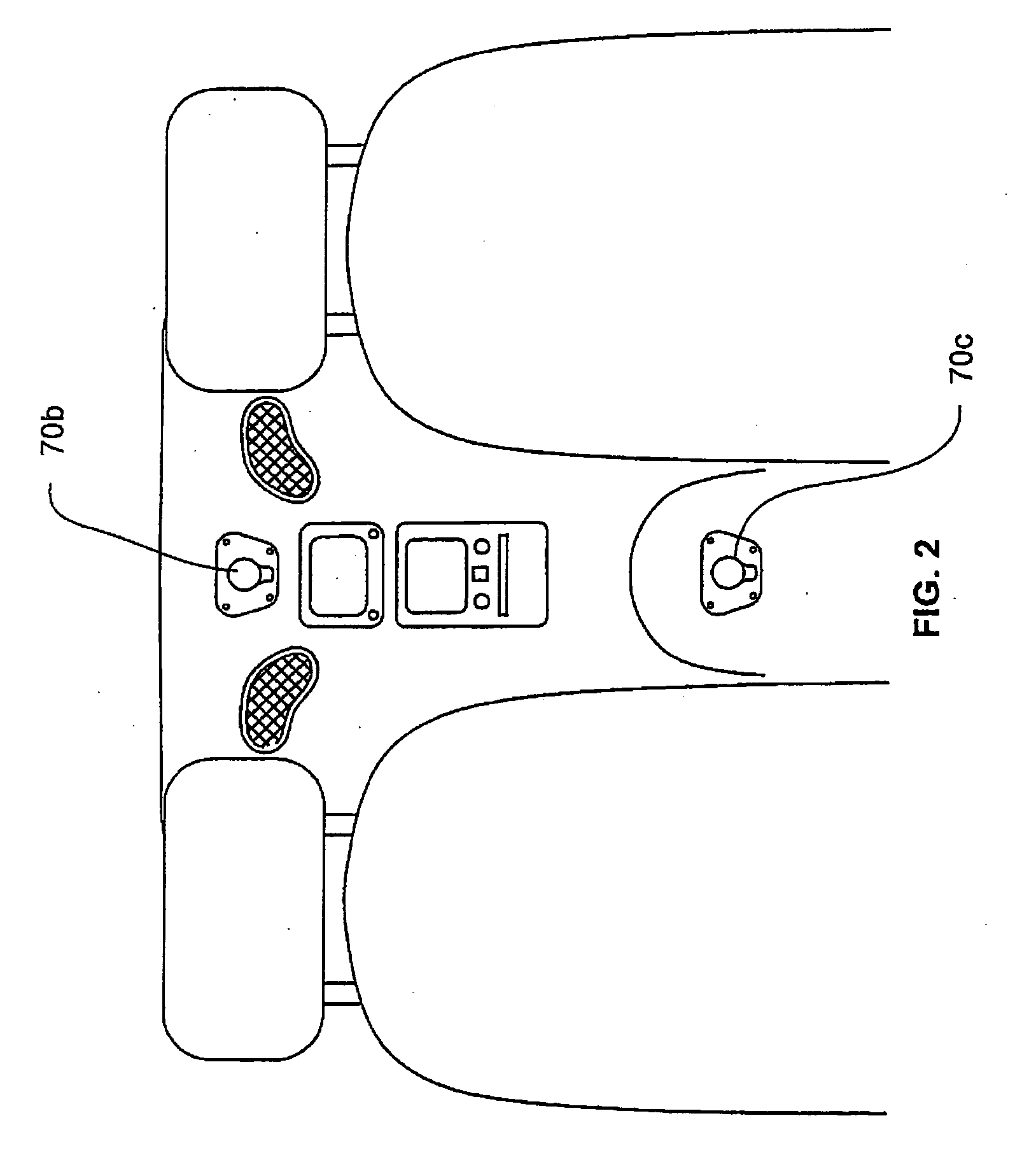Vehicle vacuum system
a vacuum cleaner and vehicle technology, applied in the field of automobile accessories, can solve the problems of difficult to create a space-efficient, simple operation, mechanically reliable device, and limited ability to reach all areas of the passenger vehicl
- Summary
- Abstract
- Description
- Claims
- Application Information
AI Technical Summary
Problems solved by technology
Method used
Image
Examples
Embodiment Construction
[0027]For the purpose of promoting an understanding of the present invention references are made in the text hereof to embodiments of a central vacuum cleaner system for a vehicle, only some of which are depicted in the figures. It should nevertheless be understood that no limitations on the scope of the invention are thereby intended. One of ordinary skill in the art will readily appreciate that modifications such as the dimensions, size, and shape of the components, alternate but functionally similar locations, and the inclusion of additional elements are deemed readily apparent and obvious to one of ordinary skill in the art, and all equivalent relationships to those illustrated in the drawings and described in the written description do not depart from the spirit and scope of the present invention. Some of these possible modifications are mentioned in the following description. Therefore, specific details disclosed herein are not to be interpreted as limiting, but rather as a re...
PUM
 Login to View More
Login to View More Abstract
Description
Claims
Application Information
 Login to View More
Login to View More - R&D
- Intellectual Property
- Life Sciences
- Materials
- Tech Scout
- Unparalleled Data Quality
- Higher Quality Content
- 60% Fewer Hallucinations
Browse by: Latest US Patents, China's latest patents, Technical Efficacy Thesaurus, Application Domain, Technology Topic, Popular Technical Reports.
© 2025 PatSnap. All rights reserved.Legal|Privacy policy|Modern Slavery Act Transparency Statement|Sitemap|About US| Contact US: help@patsnap.com



